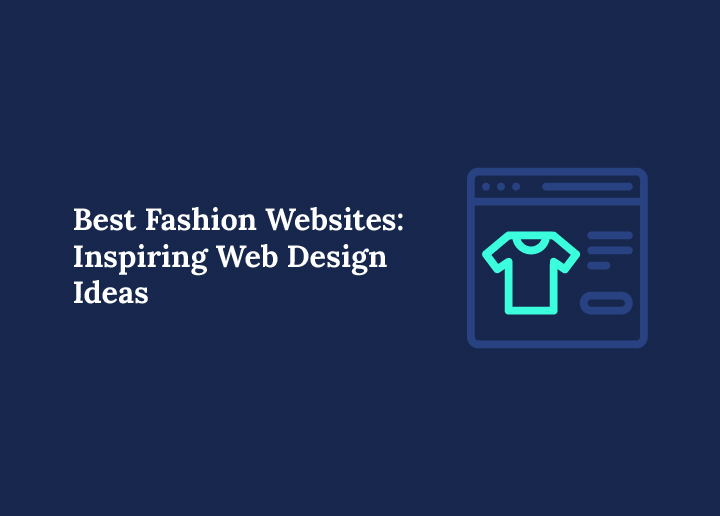The digital runway is more competitive than ever. For fashion brands, a website is not just an online store; it’s a statement, an experience, and often, the first impression. In 2025, the best fashion websites will be those that master the art of blending stunning visuals with seamless functionality. They will be the benchmark for fashion website design, setting trends and captivating audiences worldwide.
This comprehensive guide will dive deep into the world of fashion websites, showcasing what makes them stand out and offering inspiring ideas for your digital presence.
We’ll explore the critical role of design, analyze top industry leaders, and uncover the latest web design trends shaping the future of online fashion.
Why Web Design Matters For Fashion Websites?
Aesthetics are paramount in the fast-paced world of fashion. Your fashion brand website is an extension of your brand’s identity.
It’s where your story unfolds, your collections are presented, and your customers connect with your vision. A well-designed website is no longer a luxury but a necessity for any successful online fashion store.
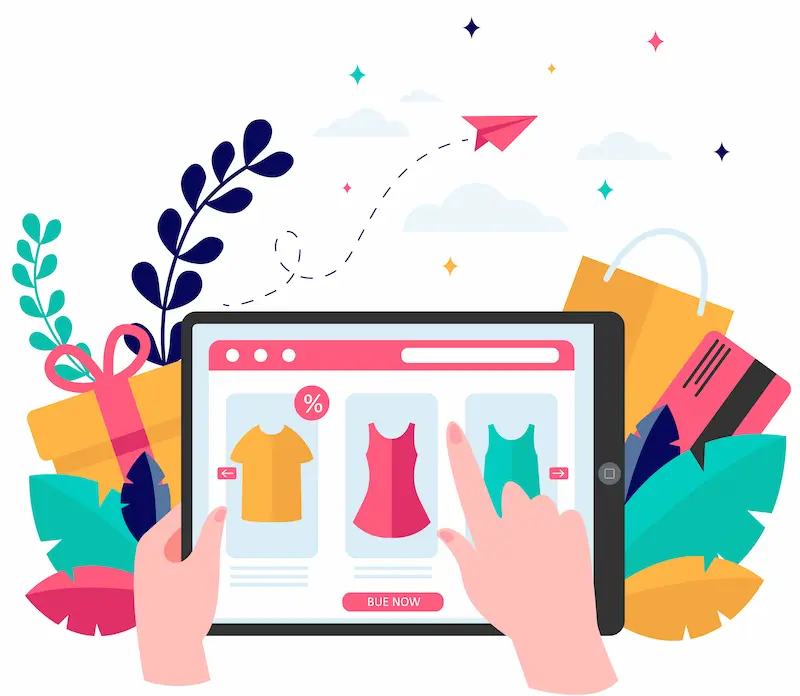
Impact of Design on User Experience and Conversions
Think about the last time you visited a clothing website that was clunky, slow, or difficult to navigate. Chances are, you didn’t stay long.
In contrast, an intuitive, visually appealing, and responsive website can draw you in, making the shopping experience enjoyable and effortless. This is the essence of fashion e-commerce UX.
Great design directly translates to an enhanced user experience (UX). Users’ satisfaction increases when they can easily browse products, find information, and complete purchases. This positive experience builds trust and loyalty, leading to higher conversion rates.
For clothing websites, every design element, from the layout of product pages to the clarity of calls to action, influences whether a visitor becomes a customer. User experience in fashion web design is crucial for converting browsers into buyers.
SEO And Performance Benefits of Great Design
Beyond aesthetics and UX, a well-structured and optimized fashion website design offers significant SEO and performance benefits. Search engines like Google favor websites that are fast, mobile-friendly, and easy to crawl.
A clean code base, optimized images, and responsive design contribute to faster loading times, better mobile performance, and critical ranking factors.
A great design also encourages longer dwell times and lower bounce rates, signaling to search engines that your site provides value.
By incorporating relevant keywords naturally within engaging content and ensuring a logical site structure, fashion industry websites can improve their visibility in search results, attracting more organic traffic.
This combination of design and technical optimization is essential for standing out among the many online fashion stores.
Also Read: Why PSD to WordPress is Better Than Using a Theme For Your Fashion Brand
Elevate Your Fashion Website With Custom WordPress Design
Bring your brand vision to life with a stunning, SEO-friendly, and user-focused WordPress fashion website.
Best Fashion Websites With Inspiring Web Design
Let’s explore some of the most inspiring fashion websites, highlighting their unique design philosophies and innovative approaches. These examples showcase the pinnacle of creative fashion website design and offer valuable insights for anyone looking to build a compelling online presence.
Dior: Cinematic Storytelling and Editorial Luxury
Dior’s website is a masterclass in luxury fashion websites. It’s an immersive experience that goes beyond simple product display and embraces cinematic storytelling.
High-quality videos, editorial imagery, and evocative narratives transport visitors into the world of Dior.
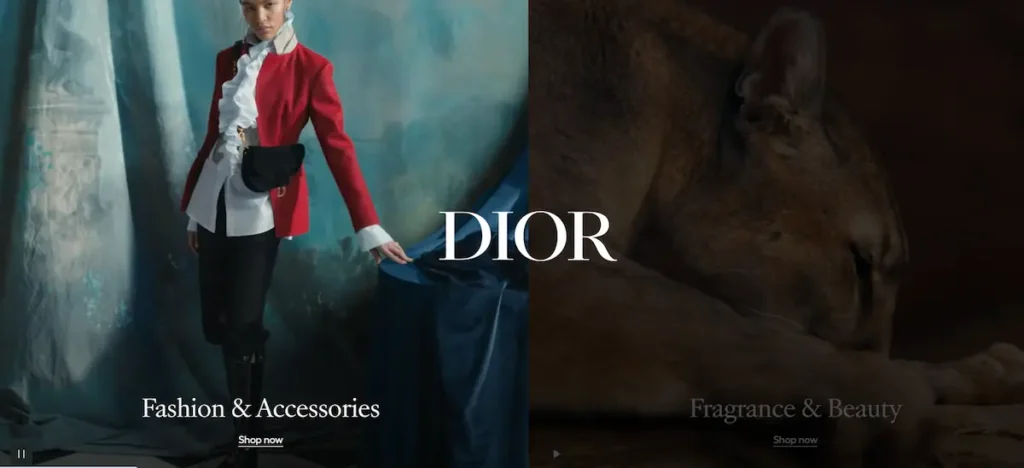
The site balances rich content with a refined, minimalist interface, ensuring the brand’s heritage and artistry take center stage. Every detail, from the typography to the subtle animations, exudes an air of exclusivity and elegance.
Gucci: Bold Art Direction and Experimental Layouts
Gucci consistently pushes boundaries, and its website reflects this audacious spirit. Known for its bold art direction and experimental layouts, Gucci’s digital platform is a vibrant tapestry of creativity.
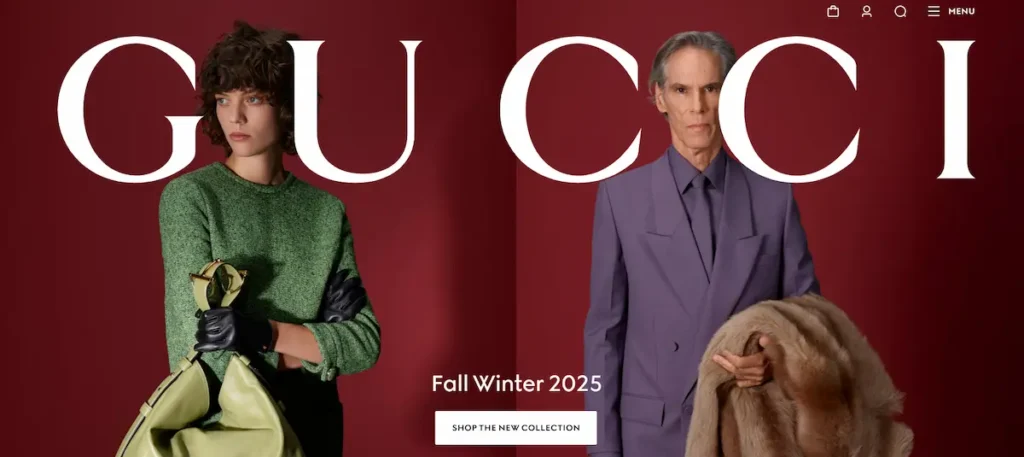
It seamlessly blends e-commerce with artistic campaigns, often featuring unique navigation patterns and unexpected visual juxtapositions.
The site is a playground for visual exploration, reflecting the brand’s eclectic and avant-garde aesthetic, making it one of the most modern fashion websites.
Chanel: Minimal Elegance and Refined Navigation
Chanel’s online presence is a testament to its enduring philosophy of minimal elegance. The website is clean, sophisticated, and incredibly intuitive.
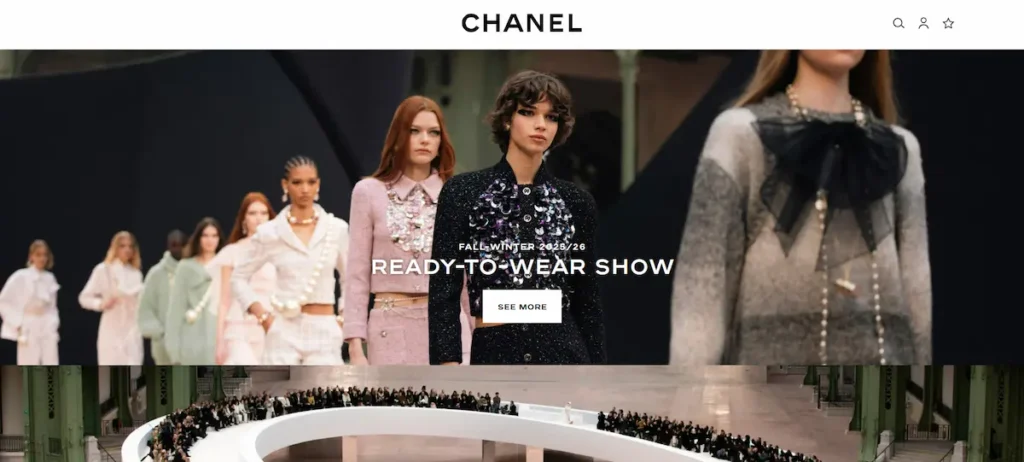
Navigation is refined, allowing users to explore collections, haute couture, and brand history effortlessly.
High-resolution imagery and understated animations maintain an air of luxury without overwhelming the user. It’s a prime example of how simplicity, executed flawlessly, can create a powerful and memorable digital experience.
Burberry: Editorial Storytelling and Runway Integration
Burberry excels at editorial storytelling, using its website to weave narratives around its collections and campaigns. The integration of runway shows, behind-the-scenes content, and brand heritage creates a rich tapestry of engagement.
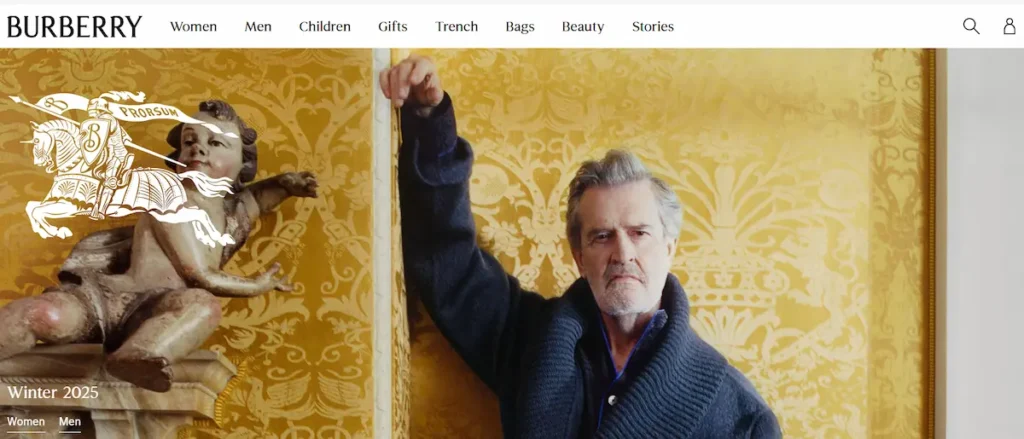
The site seamlessly blends content with commerce, allowing users to move fluidly from discovering new collections to purchasing. Its sophisticated design reflects the brand’s classic yet contemporary appeal.
Allbirds: Sustainable Fashion and Clean Commerce UX
Allbirds stands out as a leader in sustainable fashion websites. Its website perfectly embodies the brand’s commitment to eco-friendliness through a clean commerce UX. The design is straightforward, transparent, and highly functional, focusing on product benefits and sustainability initiatives.
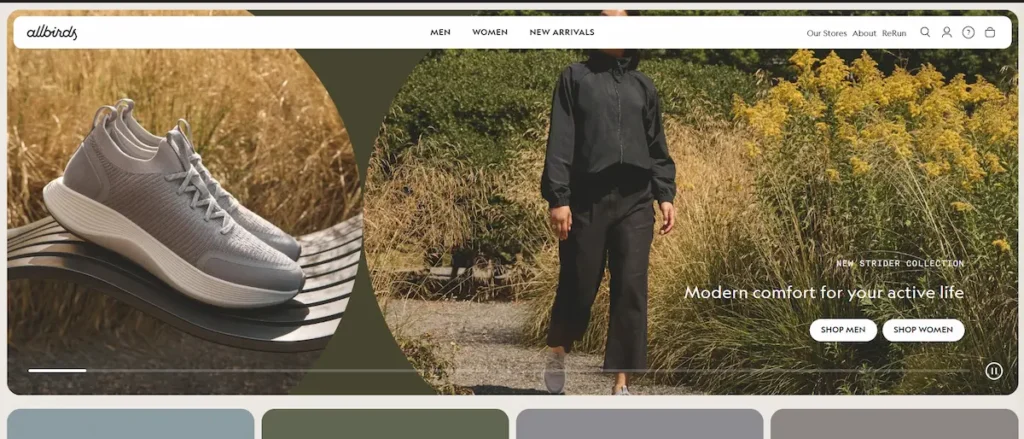
Clear calls to action, easy navigation, and detailed product information make for an efficient and pleasant shopping journey, showcasing that conscious consumerism can be stylish and simple.
Uniqlo: Modular Design and Functional Storytelling
Uniqlo‘s website is a masterclass in modular design and functional storytelling. The site’s adaptable layout efficiently showcases its vast product range while maintaining a consistent brand identity.
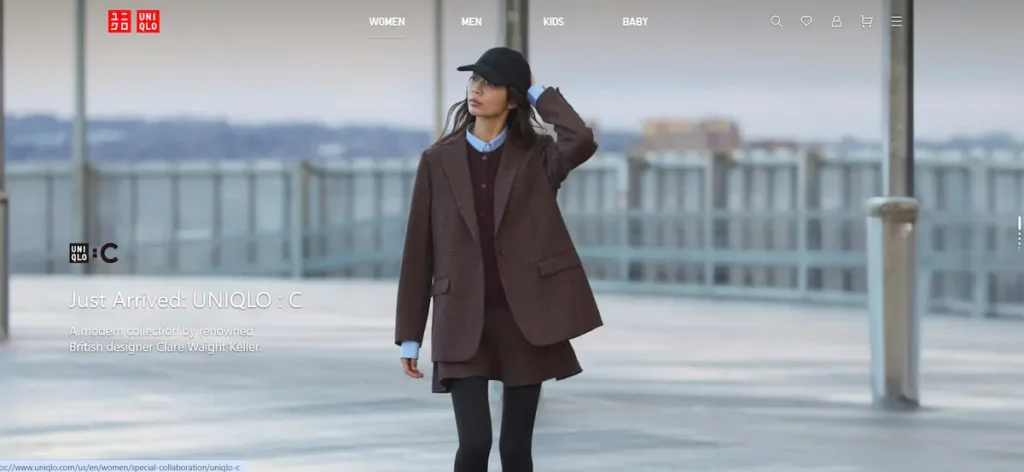
It uses clear categories, engaging product descriptions, and lifestyle imagery to tell stories about its clothing, emphasizing comfort, innovation, and quality. The user-friendly interface streamlines browsing and purchasing, a hallmark of excellent fashion e-commerce UX.
Farm Rio: Vibrant Colors and Joyful Branding
Farm Rio’s online store is an explosion of vibrant colors and joyful branding. The website perfectly captures the brand’s Brazilian roots and festive spirit, using lively patterns, dynamic imagery, and engaging animations.
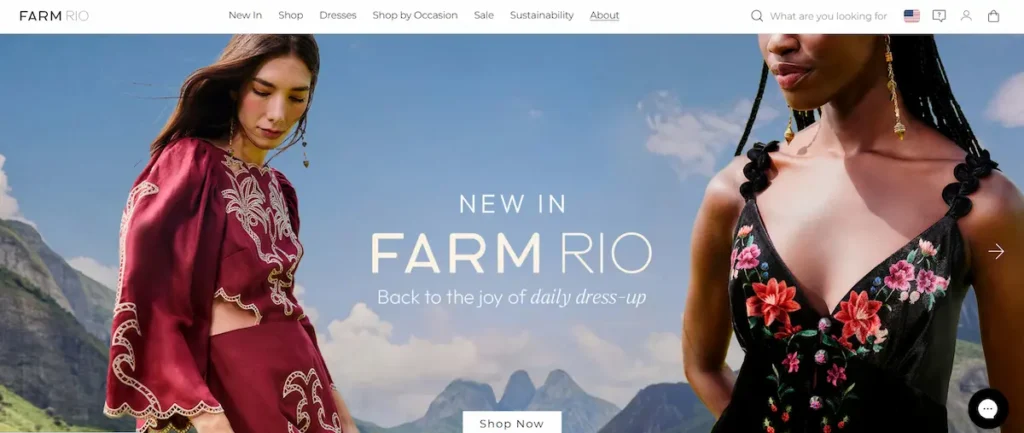
It’s an immersive visual journey that evokes happiness and wanderlust, making shopping an exciting and sensory experience. The design is bold and unique and truly reflects the brand’s distinctive personality.
Sézane: Editorial Commerce and Personalization
Sézane‘s website embodies Parisian chic with its blend of editorial commerce and personalization. The site features beautiful photography, curated collections, and compelling narratives, making it feel more like a fashion magazine than a typical online store.
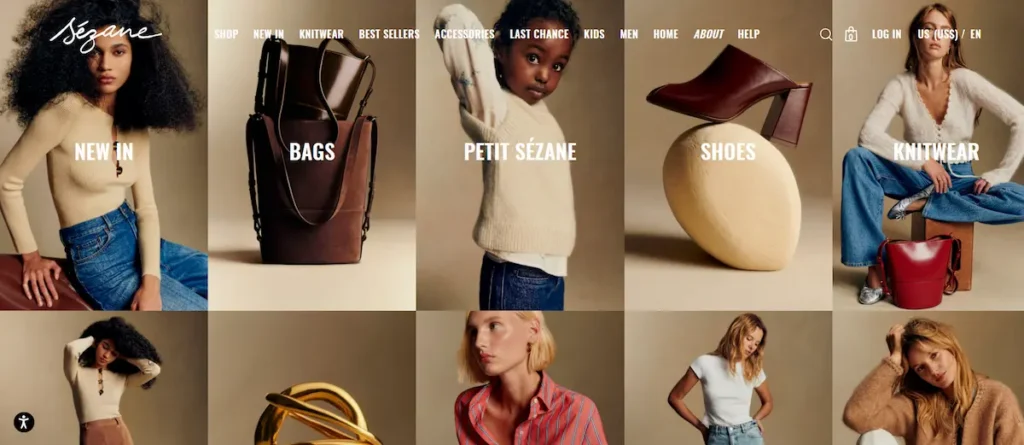
Sézane also leverages personalization to offer tailored recommendations and content, enhancing the shopping journey and fostering a strong sense of community around the brand.
Melula: Playful Design for Kids’ Fashion
Melula demonstrates how playful design for kids’ fashion can be charming and functional. The website is bright, whimsical, and perfectly tailored to its young audience and their parents.
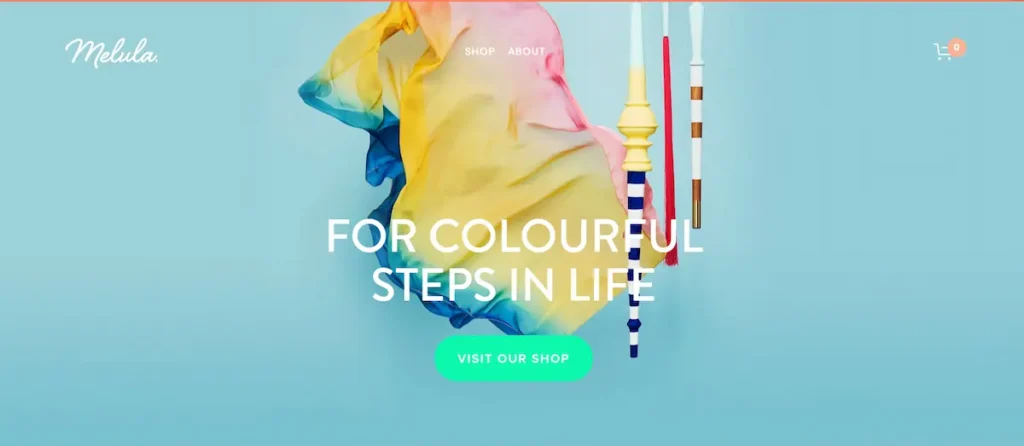
It uses engaging illustrations, transparent product displays, and a user-friendly interface that makes browsing for children’s clothing an enjoyable experience. The design is simple yet effective, communicating the brand’s fun and imaginative spirit.
Nordstrom: Enterprise UX and Seamless Navigation
As a large retailer, Nordstrom’s website showcases excellence in enterprise UX and seamless navigation. Despite its extensive inventory, the site maintains an organized and intuitive structure, allowing users to easily find what they want.
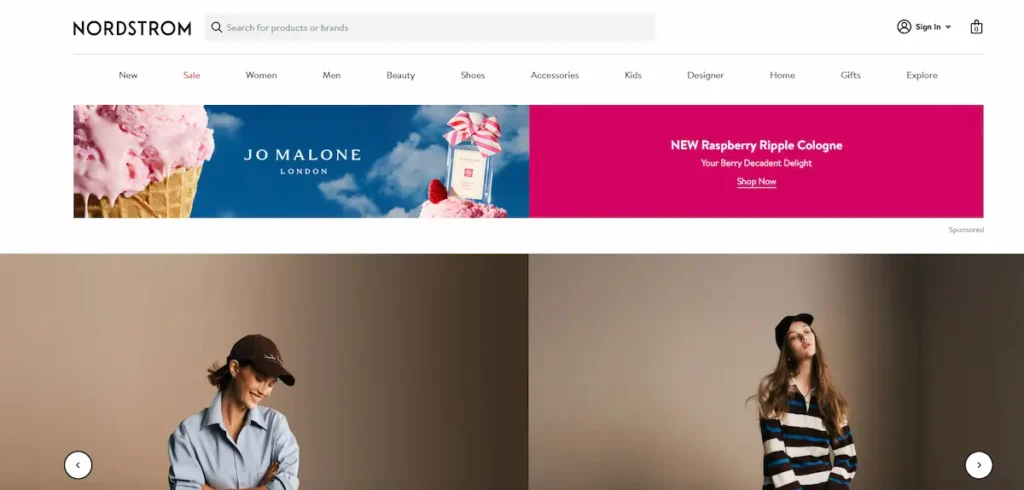
Robust search filters, personalized recommendations, and a smooth checkout process contribute to a premium shopping experience, demonstrating how complex operations can be managed with elegant design.
Web Design Trends For Fashion Websites
The digital landscape constantly evolves, and fashion websites are at the forefront of these innovations. Several key trends are shaping how fashion brands engage with their audiences online.
Immersive Media and Performance Optimization
The desire for richer, more engaging experiences drives the trend towards immersive media. This includes high-definition video lookbooks, interactive 3D product views, and augmented reality (AR) try-on features.
However, with rich media comes the challenge of performance. Performance optimization is crucial to ensure these immersive experiences load quickly and smoothly across all devices. This means efficient image and video compression, lazy loading, and robust server infrastructure.
Editorial Storytelling Combined with eCommerce
The blend of content and commerce continues to strengthen. Editorial storytelling combined with e-commerce transforms a simple shopping trip into an engaging narrative.
Fashion brands are creating dedicated content hubs, digital magazines, and interactive campaigns that showcase products and tell the story behind them, highlighting craftsmanship, inspiration, and brand values. This approach builds a deeper emotional connection with customers.
Sustainability and Ethical Branding in Design
As consumers become more conscious, sustainability and ethical branding in design are gaining immense importance. Fashion websites increasingly use design to highlight their eco-friendly practices, transparent supply chains, and social initiatives.
This can be conveyed through dedicated sustainability pages, clear badging on product listings, and visual narratives that emphasize responsible sourcing and production. Authenticity and transparency are key.
AI Personalization and Curated Storefronts
Artificial intelligence (AI) is revolutionizing the online shopping experience. AI personalization and curated storefronts are becoming standard features on leading fashion websites.
AI algorithms analyze user behavior, purchase history, and preferences to offer highly relevant product recommendations, personalized content, and dynamic pricing. This creates a bespoke shopping experience for each individual, making them feel understood and valued.
How to Apply These Ideas On WordPress?
WordPress powers a significant portion of the web and is an excellent platform for creating stunning fashion websites. Its flexible ecosystem makes it easy to implement many of these design principles and features.
Essential Themes and Builders for Fashion Websites
To kickstart your WordPress fashion website design, choosing the right theme and page builder is crucial.
Themes like Flatsome, Astra, OceanWP, and Divi offer robust e-commerce integrations, stunning design options, and high customization capabilities.
Page builders like Elementor, Divi Builder, and Beaver Builder provide intuitive drag-and-drop interfaces, allowing you to create complex layouts and engaging visual experiences without extensive coding knowledge. These tools are perfect for crafting beautiful fashion collection landing pages and visually rich product showcases.
Plugins for Performance, SEO, And UX
WordPress’s strength lies in its vast plugin directory. For performance, consider plugins like WP Rocket for caching and optimization, and Smush for image compression. For SEO, Yoast SEO or Rank Math are indispensable for managing on-page elements, sitemaps, and schema markup.
To enhance UX, plugins for advanced product filters, wishlist functionality, and customer reviews can significantly improve the shopping experience. Integrating these plugins ensures your mobile-friendly fashion websites are fast, discoverable, and user-centric.
WordPress Design Modules You Can Recreate
Many design elements seen on the best fashion websites can be recreated in WordPress.
- Hero Sections: Use full-width image or video modules to create impactful hero sections, similar to Dior’s cinematic storytelling.
- Product Grids: Implement advanced product grid layouts with hover effects and quick views to mimic Uniqlo’s modular design.
- Editorial Layouts: Utilize column and section builders to create magazine-style layouts for blog posts and lookbooks, echoing Sézane’s editorial commerce.
- Image Galleries: Showcase high-resolution product imagery and lookbooks with responsive galleries, essential for any fashion lookbook design.
- Custom Typography: Leverage theme options or custom CSS to implement unique typography that aligns with your brand’s aesthetic, like Chanel’s refined elegance.
SEO and AI Optimization Checklist for Fashion Websites
Even the most beautiful website needs to be found. A robust SEO strategy combined with AI tools is essential for attracting and retaining customers on fashion industry websites.
On-Page SEO and Structured Data
- Keyword Integration: Ensure your primary, secondary, and LSI keywords (like “best fashion websites” or “luxury clothing websites inspiration”) are naturally integrated into your H1s, H2s, product descriptions, and blog content. Aim for a density of 1-1.5%.
- Meta Titles and Descriptions: Craft compelling and keyword-rich meta titles and descriptions for all pages and products.
- URL Structure: Use clean, descriptive, and keyword-friendly URLs.
- Internal Linking: Link relevant pages within your site to improve navigation and distribute link equity.
- Structured Data (Schema Markup): Implement schema markup for products, reviews, and organization information. This helps search engines understand your content better and can lead to rich snippets in search results, making your fashion e-commerce websites stand out.
Image Optimization and Core Web Vitals
- Image Compression: Optimize all images for the web to ensure fast loading times without sacrificing quality. Use modern formats like WebP.
- Alt Text: Provide descriptive alt text for all images, improving accessibility and SEO.
- Responsive Images: Ensure images are responsive and display correctly on all devices, crucial for mobile-friendly fashion websites.
- Core Web Vitals: Regularly monitor and improve your Core Web Vitals (Largest Contentful Paint, First Input Delay, Cumulative Layout Shift). These metrics directly impact user experience and search rankings. Tools like Google PageSpeed Insights can help identify areas for improvement.
AI Tools for Personalization and Content Creation
- AI for Personalization: Implement AI-powered recommendation engines to suggest products based on user behavior and preferences, as seen on leading fashion websites with AI personalization. This boosts conversions and customer satisfaction.
- AI for Content Creation: Utilize AI writing assistants to help generate product descriptions, blog post outlines, or even social media copy. While human oversight is essential, AI tools for fashion websites can significantly streamline content creation.
- AI for Chatbots: Deploy AI-powered chatbots for instant customer support, answering FAQs, and guiding users through shopping.
- Predictive Analytics: Use AI to analyze sales data and predict future trends, helping with inventory management and marketing strategies.
Conclusion and Key Takeaways
The best fashion websites are more than just digital storefronts; they are immersive brand experiences that prioritize design, user experience, and cutting-edge technology.
From Dior’s cinematic luxury to Allbirds’ sustainable simplicity, these sites offer a blueprint for success in the competitive online fashion arena.
Key takeaways for anyone looking to build or enhance their fashion e-commerce websites include:
- Design is Paramount: Invest in high-quality fashion website design that reflects your brand’s identity and provides a seamless user experience.
- Embrace Storytelling: Use editorial content and immersive media to tell your brand’s story and connect with customers on an emotional level.
- Optimize for Performance: A fast, mobile-friendly website is crucial for user satisfaction and SEO.
- Leverage AI: Utilize AI for personalization, content creation, and customer support to create a tailored and efficient shopping journey.
- Prioritize Sustainability: If relevant, integrate ethical and sustainable messaging into your design and content.
By focusing on these principles, your fashion website can not only compete but thrive in the dynamic digital landscape, inspiring customers and driving success. The future of online fashion is bright, and with the right approach, your brand can be at the forefront of innovation.
FAQs on Best Fashion Websites
What makes a fashion website successful in 2025?
A successful fashion website combines strong brand storytelling, mobile-first design, fast performance, and AI-driven personalization. It should inspire customers visually while making shopping seamless and accessible.
Which are the best fashion websites?
The best fashion websites include Dior, Gucci, Chanel, Burberry, Allbirds, Uniqlo, Farm Rio, Sézane, Melula, and Nordstrom. Each site stands out for unique design features such as editorial storytelling, sustainability messaging, or advanced e-commerce UX.
How can I design a fashion website like Dior or Gucci?
To design a fashion website like Dior or Gucci, focus on cinematic visuals, bold typography, and curated editorial layouts. On WordPress, use a lightweight theme, visual builder, and plugins for image optimization and structured data to replicate these effects.
What are the top web design trends for fashion websites?
Key web design trends include immersive video backgrounds, editorial content blended with e-commerce, sustainability-focused branding, and AI-powered personalized shopping experiences. These trends help fashion websites engage users and boost conversions.
How can WordPress be used to build a fashion website?
WordPress can power modern fashion websites by combining WooCommerce for e-commerce, page builders for creative layouts, and SEO plugins for visibility. It offers flexibility to replicate luxury designs while ensuring mobile speed and scalability.
